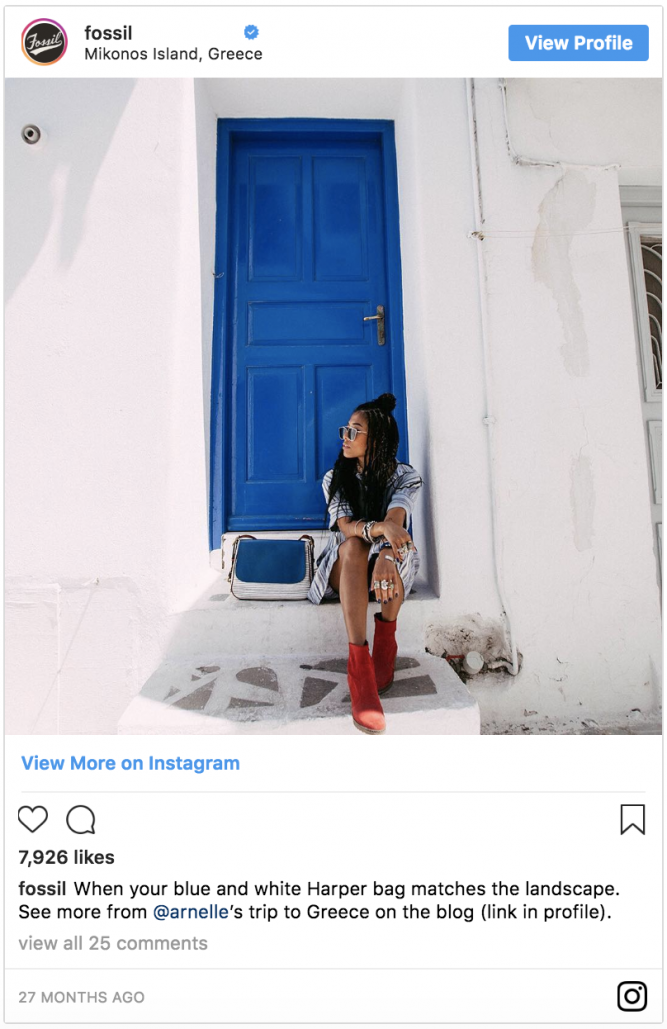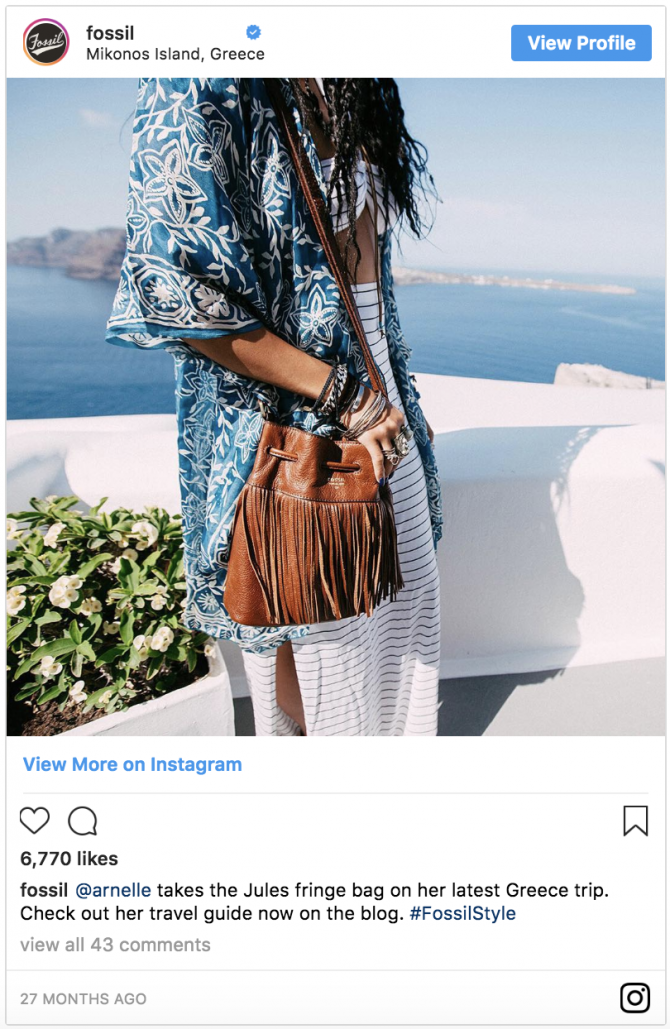
Photo by Kipras Štreimikis on Unsplash
Think back to the last time you purchased something new… What did you check to ensure you were making the right decision? Chances are, you read reviews, asked your friends, or bought something you’d heard buzz about. According to this report, 92% of consumers turn to people they know for referrals above any other source. As social media expands the social networks of people, those referrals are increasingly coming from celebrities, industry experts, athletes, and regular people (and even dogs) who have amassed a following. That’s right: from social media influencers.
As social media influencers continue to gain steam — and prove ROI — more performance and affiliate marketers are making their first influencer connections and running their first campaigns than ever before. In this blog post, we reveal the six essential steps to setting up your first influencer marketing campaign for success, whether you want the Kardashians to promote your products, or simply a squirrel with half-a-million followers.
1. Determine Your Influencer Marketing Goals
First off, it’s important to determine the goals of your social media influencer marketing campaign. Are you looking to increase sales, brand awareness, followers, leads, or engagement? Each of these have different key performance indicators (KPIs) you will want to set up in the beginning. This will allow you be able to track your success at the end of the campaign.
For example, if you want to increase sales, it may be important to set up a promo code so you know exactly how many sales came from your influencers. If engagement is important, then likes, comments, or shares may be your metric of choice.
2. Outline the Campaign Details
Once you get clear on why you’re creating an influencer marketing campaign, it’s important to flesh out the rest of the details. Outline your budget, target audience, roughly when your campaign will run, and what your campaign might look like in terms of number of posts, schedule, or frequency.
You will also want to have a sense of which social media platforms your target audience hangs out on most, so you know where to publish your content and which type of influencers to look for. Social media platforms to consider include:
- YouTube
- TikTok
- Snapchat
- Twitch
- Blogs
- Podcasts
These details could change slightly depending on the type of influencers you find, but it’s important to formulate a general idea first if you have certain products you’re launching and you want to time an influencer campaign accordingly. Then, you’re ready to …
3. Find the Right Influencers
Note that we said ‘right’ — not to be confused with biggest, most popular, or most expensive. (What a relief!)
In fact, depending on your brand, the right social media influencer could actually be a niche influencer with a small but very passionate following. The more specific you can get, the more your marketing message will resonate with followers, and the more genuine the content will feel.
There are a few ways you can find social media influencers:
- Good old-fashioned Google searching. You can search top influencers depending on your industry, check out their social media links, and reach out to the ones that seem like the best fit. It’s by far the most manual way, but doesn’t hurt if you’re starting from scratch just to get a feel for who’s out there. Make sure to check out the influencer’s social community first.
- Hashtags. Similar to Google searching but more tailored to social media, you can do a hashtag search on the platform of your choosing to identify people who are already posting about the topic. On Instagram, you can search Top Results to see which posts have the most engagement, and on YouTube you can see which videos are recommended to find other influencers within your arena.
- Networks. Networks like BrandCycle, Hello Society, Activate, and Fitfluential will do the heavy lifting for you, surfacing social media influencers who match the marketing criteria you’re looking for. A positive aspect of networks is that they can help you find more niche influencers that might not surface in Google searches. Another benefit is that some offer tracking capabilities for your campaigns, so you can measure performance within their social media platforms. As such, networks also tend to be the most expensive option.
- Marketplaces. Marketplaces generally don’t offer the same tracking capabilities as networks, but they allow you to sift through influencers without having to manually stumble across them yourself through a Google search. Marketplaces like Tribe, HYPR, and Brand Snob categorize influencers with links to their social media accounts, so you can quickly sift through the options all in one place, instead of tracking them down yourself.
4. Reach Out to Your Influencer List
Once you find a few social media influencers who seem like the right fit, reach out to them and share the details of your marketing campaign. As you can see below, most influencers are driven by things like creative freedom, competitive compensation, and a brand that naturally aligns with their values.

Social media influencers respond to what makes them likely to partner with brands more than once.
Once you come to an agreement, give your influencers freedom and trust their instincts on language, creative, and voice. Definitely review the marketing materials to ensure they reflect your brand in the correct light, but resist the urge to heavy-hand the messaging. Part of why social media influencer marketing is so popular is because people have grown weary of traditional advertising, and getting recommendations from someone they already follow and identify with feels more authentic. People will sense the authenticity (or lack of it), so try to let your influencers work their magic, in the way they know their audience will respond to best.
As influencer Taylor Nolan explained during a panel at Postback 2018, “It’s easy for the people that follow you to tell if something is unauthentic. … Make sure you’re working with brands that allow you to be authentic to your followers.”
5. Confirm Publishing Schedule and Promote Your Campaign
Once all content is good to go, confirm the remaining details of timing with your influencers. Make sure you’re aligned on how you’re going to promote the content and how you’re going to track it, like with promo codes.
For example, maybe after they post on Facebook, you will use part of your budget to boost the post to get more views and engagement. Or maybe once they tweet on Twitter, you will retweet to get more leverage out of the content. Social media influencer marketing campaigns are an investment, so you want to make sure you take full advantage and make your content go further than just one lone post. Also consider cross-promotion so you can market between your channels.
In the example below, Fossil does a great job of giving a shout out to one of their influencers, so this campaign gets more attention than if only the influencer posted. This also adds a benefit to the influencer, in that they get promoted by a larger brand for their efforts working with them.


6. Measure the Influenced Outcome
Once your campaign is running, it’s time to measure your outcomes. How did you do? Look back on the KPIs you set up before the campaign to determine whether you hit your targets. Tools such as NeoReach, Onalytica, and Julius allow you to measure the performance of influencer campaigns.
Additional questions to reflect on include:
- Which posts are performing best?
- Which posts are under-performing?
- What did you learn about your audience?
- Would you work with this influencer again?
- Which platform was most successful if you used multiple?
- What would you change about your post frequency, platform, or budget?
- Did this approach save money compared to traditional advertising?
Now Get Out There and Get Noticed
Regardless of the size, industry, or goal of your brand, social media influencer marketing can provide a way to mitigate the costs of traditional advertising, connect more authentically with consumers, and find new leads you wouldn’t otherwise reach without such niche targeting.
To learn more, watch our on-demand webinar, “When Good Advice Pays: Community Influencer Marketing.” Or, check out our article on everything you need to know about influencer marketing.
What other tips and tricks do you have for working with influencers? Let us know in the comments below!
Author
Becky is the Senior Content Marketing Manager at TUNE. Before TUNE, she handled content strategy and marketing communications at several tech startups in the Bay Area. Becky received her bachelor's degree in English from Wake Forest University. After a decade in San Francisco and Seattle, she has returned home to Charleston, SC, where you can find her strolling through Hampton Park with her pup and enjoying the simple things between adventures with friends and family.




Leave a Reply
You must be logged in to post a comment.